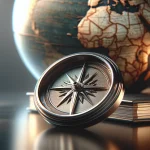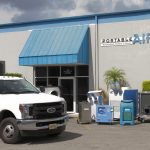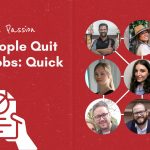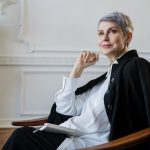This interview is with Facundo Yebne, Creative Mind at FLY Miami Art.
Facundo Yebne, Creative Mind, FLY Miami Art
As an Argentine-born entrepreneur turned Miami-based artist, can you tell us about your journey into the world of art startups and how your background in business has influenced your approach?
As an Argentine-born entrepreneur turned Miami-based artist, my journey into art wasn’t planned—it was instinctual. After years of building multimillion-dollar businesses in hospitality, short-term rentals, and laundry services, I found myself craving a deeper sense of meaning and expression. In 2024, I visited a friend’s art studio, and something clicked. That same year, with only one finished piece, I applied to Red Dot Miami, an art show during Art Basel week—and got in. That moment changed everything.
I entered the art world with no formal experience, but I leaned on everything I’d learned as an entrepreneur. I quickly sought help in the areas where I lacked knowledge. My first team failed. The second team—diverse in skills and experience—made the impossible happen: we created 24 original artworks in less than two months.
I treat my art like a startup: fast execution, clear branding, emotional connection, and public engagement. I built FLY Miami Art with the same entrepreneurial drive—except now, my product is joy, connection, and conversation. My signature medium is rubber ducks and resin, and in under a year, I exhibited at Red Dot Miami, was commissioned by Lincoln Road and the City of Miami Beach to create two large-scale installations, opened a pop-up gallery on Lincoln Road near the sculptures, was personally invited by the President of the Florence Biennale to apply (and was accepted) for the 2025 edition, co-authored a children’s book now available on Amazon, and received press coverage from local to international media. My installations became true landmarks, drawing tens of thousands of visitors of all ages.
To me, art startups are about turning emotion into experience—and experience into impact. My business background helps me scale that impact without losing authenticity.
You’ve successfully transitioned from real estate and hospitality to becoming a full-time artist. What motivated this career shift, and how did you navigate the challenges of entering the art world?
After two decades in real estate and hospitality, managing over 500 condo-hotel units, building short-term rental businesses in Buenos Aires and Miami, and running a laundry service for luxury hotels, I reached a point where traditional success no longer felt fulfilling. I went through a series of personal losses, losing people very close to me. During that time of grief, I realized I needed a new outlet. Something personal. Something real.
The shift wasn’t planned. In 2024, I visited a friend’s art studio and felt something I hadn’t in years: curiosity, excitement—a fire inside. I insisted on taking classes with him, a brilliant 95-year-old artist who taught me a lot. But painting alone didn’t fulfill me. I started buying every material I could find, experimenting nonstop. Being an engineer gave me the confidence to try new tools, new methods, new mediums, without fear. Then, one day, I stumbled upon a bag of rubber ducks. The moment I started creating with them, I felt that fire again.
Navigating the art world as an outsider wasn’t easy. I had no formal training, no connections, and no time to waste. So I treated it like a startup: build fast, test fast, fail fast. Every obstacle became a project—whether it was sourcing materials from China for the first time, mastering resin techniques, creating a brand, or assembling the right team. I wasn’t afraid to ask for help or bring in people more skilled than me.
What motivated me wasn’t just healing. It was the realization that art could create emotional connection far deeper than anything I’d ever built before. That made the risk worth it. And now, every piece I create is a reflection of that turning point.
Your recent public art installations, UnityBeak and Proud Love, gained significant attention. Can you share a specific challenge you faced during their creation and how you overcame it using your entrepreneurial skills?
One of the biggest challenges we faced during the creation of UnityBeak and Proud Love was a major delay from the sculptor. With the unveiling already scheduled and the public installations heavily promoted, we had no room for failure. As the deadline approached, my team and I stepped in to help, first assisting the sculptor, then eventually taking over. We worked non-stop. The night before the unveiling, we were still assembling. At 6 a.m., just four hours before the event, we finally finished.
But that was just one layer of chaos. Early on, we realized we had to test the glue. Mounting thousands of ducks vertically wasn’t as easy as it seemed. I ended up testing 25 different adhesives until I found the one that could hold each duck in place with minimal movement, even under Miami’s heat and humidity.
Then came the decoloration issue. The UV sealant we used reacted badly with the rubber material exposed to the heat of Miami. It didn’t cure properly and left a sticky residue. Worse, it caused color fading under high temperatures. We had to go back to the drawing board—recreate samples, test multiple paints, and eventually find a formula that could hold the sealant, protect the color, and still dry evenly on rubber.
All of these problems would’ve killed the project if I hadn’t approached it like a startup—problem-solve fast, test like crazy, pivot without ego, and lead the team through the chaos. And in the end, we delivered two massive public sculptures that became landmarks and brought joy to tens of thousands of people. That’s the power of mixing art with grit.
In your experience, what’s the most crucial aspect of running an art startup that many artists might overlook, and how can they address it?
The most overlooked aspect of running an art startup is treating it like a real business from day one. Most artists focus only on creating, but if you ignore branding, systems, audience building, or how your work connects emotionally with people, you will stall. Talent is not enough. You need to think in terms of structure. What’s your product? Who’s your market? What’s the experience you’re offering? For me, art is more than the piece; it’s the story, the message, the interaction, the memory people walk away with.
The fastest way to address this is to build a team or support system early. Don’t try to do everything yourself. Hire or partner with people who are better than you in the areas you don’t know—marketing, logistics, branding, sales. I learned to delegate fast, test faster, and focus on what only I can do: creating and leading the vision.
Treat your art like a brand with a mission, not just a hobby, and everything changes.
How do you balance the creative process with the business side of your art startup? Can you provide an example of when these two aspects clashed and how you resolved it?
Balancing creativity and business is a daily fight. On one hand, I need full freedom to create, no rules, no deadlines. On the other, I run FLY Miami Art like a start-up, with production schedules, marketing plans, and team coordination. Those two worlds don’t always get along.
One example: during the production of my public installations, UnityBeak and Proud Love, I was deep in the creative zone, experimenting with materials, colors, and patterns. But at the same time, I had sponsors waiting, and event deadlines set. There was no time for “creative blocks.” I had to choose: finish the work or risk missing the moment.
The clash forced me to be ruthless with time. I created systems, batching tasks, setting creative hours, and delegating the business side where possible. I built a trusted team so I could step away from operations when needed. That’s what saved the project.
You can’t wait for inspiration if you’re running a real operation. You need structure to protect your creativity, and discipline to respect your deadlines. That’s the only way to scale both.
The art world can be notoriously difficult to break into. What unconventional strategy have you used to gain visibility for your work that other aspiring artists could learn from?
I didn’t wait for the art world to “let me in.” I created my own spotlight. Instead of chasing galleries or trying to fit into traditional art circles, I focused on building public experiences. My breakthrough came by turning rubber ducks, a playful, unexpected object, into large-scale, glow-in-the-dark installations that people couldn’t ignore. Then I went where the people were: Lincoln Road, one of the busiest pedestrian streets in Miami Beach.
I treated my art like a brand activation. I gave away branded rubber ducks at Red Dot Miami. I also had and have inflatable ducks to sign by the visitors on every activation I do. I created selfie moments, Polaroid frames, mirrors, signage—anything that invited people to engage, take photos, and tag me. That turned real-world curiosity into online reach, and media coverage followed. In less than a year, I went from unknown to commissioned artist with thousands of people interacting with my work daily.
The lesson? Stop waiting for validation. Make something so bold and shareable that the audience becomes your marketing team. Public art. Interactivity. Emotion. That’s the real strategy.
You’ve mentioned the importance of transparency during crises. Can you share a specific instance where being open about a problem in your art business actually led to a positive outcome?
When Lincoln Road commissioned me, it was late February and the delivery deadline was the end of March. Originally, they had selected a different installation. Fortunately, that changed to UnityBeak, which turned out to be the right call creatively, but it also meant quadruple the workload. At the same time, my duck shipment from China was delayed, and the sculptor was behind schedule. Everything started piling up, and I knew we weren’t going to make the original timeline. Instead of trying to hide it, I was completely transparent with the Lincoln Road team. I explained the situation clearly—the shipping issues, the production delays, and the increased complexity of the new concept.
That honesty paid off. We coordinated with the press and city officials to push the unveiling date. Everyone was on board, and the extra time made a huge difference. The installations ended up being a hit and attracted thousands of visitors.
Being open about the problem turned a potential disaster into a shared solution. That experience proved that transparency builds trust, even in high-pressure moments.
As someone who has experience in both traditional business and the art world, what’s one business practice you think more artists should adopt to succeed in their startups?
Don’t wait for things to happen. Make them happen. That’s the biggest mindset shift artists need if they want to succeed. Treat your career like a company. Have goals, deadlines, and systems. Build your brand. Follow up. Execute fast. Too many artists sit back waiting for galleries, opportunities, or collectors to find them. That’s not how startups work, and it’s not how art careers grow either. One simple rule I live by: don’t leave for tomorrow what you can do today. Action beats perfection. Every day you’re either building momentum or losing it.
Looking ahead, what do you see as the next big challenge or opportunity for art startups, and how are you preparing to address it in your own work?
One of the next big challenges for art startups is AI taking over the creative space. It’s fast, cheap, and everywhere, but it’s also mostly digital. AI can’t create with rubber ducks. It can’t glue thousands of them by hand or build a sculpture people can touch and interact with in the real world.
I use AI as a tool, not a replacement. I run ideas through it, estimate materials, test concepts, or speed up planning. But at the end of the day, I’m the one executing. I’m in the studio making it happen.
The real opportunity is using AI to work smarter without losing what makes art powerful: authenticity, emotion, and physical presence. That’s what I focus on. Keep the soul, use the tech.
Thanks for sharing your knowledge and expertise. Is there anything else you’d like to add?
Be authentic, bold, passionate, and smart in whatever you do. It doesn’t matter what your field is—if you have those four, you’ve got it. That’s the real formula.






